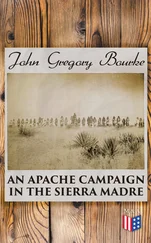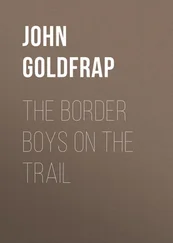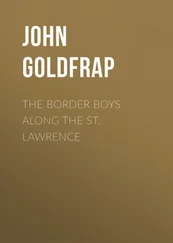The occupants of the ragged tentage found solace in the pure air which merrily tossed the flaps and flies, even if it brought with it rather more than a fair share of heat and alkali dust from the deserts of Sonora. Furthermore, there were few insects to bother, a pleasing contrast to the fate of those living in the houses, which were veritable museums of entomology, with the choicest specimens of centipedes, scorpions, “vinagrones,” and, occasionally, tarantulas, which the Southwest could produce.
On the other hand, the denizens of the adobe and the “jacal outfits” became inured to insect pests and felicitated, themselves as best they could upon being free from the merciless glare of the sun and wind, which latter, with its hot breath, seemed to take delight in peeling the skin from the necks and faces of all upon whom it could exert its nefarious powers: My assignment was to one of the rooms in the adobe house, an apartment some fourteen by nine feet in area, by seven and a half or eight in height. There was not enough furniture to occasion any anxiety in case of fire: nothing but a single cot, one rocking-chair—visitors, when they came, generally sat on the side of the cot—a trunk, a shelf of books, a small pine wash-stand, over which hung a mirror of greenish hue, sold to me by the post trader with the assurance that it was French plate. I found out afterward that the trader could not always be relied upon, but I’ll speak of him at another time. There were two window-curtains, both of chintz; one concealed the dust and fly specks on the only window, and the other covered the row of pegs upon which hung sabre, forage cap, and uniform.
In that part of Arizona fires were needed only at intervals, and, as a consequence, the fireplaces were of insignificant dimensions, although they were placed, in the American fashion, on the side of the rooms, and not, as among the Mexicans, in the corners. There was one important article of furniture connected with the fireplace of which I must make mention—the long iron poker with which, on occasion, I was wont to stir up the embers, and also to stir up the Mexican boy Esperidion, to whom, in the wilder freaks of my imagination, I was in the habit of alluding as my “valet.”
The quartermaster had recently received permission to expend “a reasonable amount” of paint upon the officers’ quarters, provided the same could be done “by the labor of the troops.” This “labor of the troops” was a great thing. It made the poor wretch who enlisted under the vague notion that his admiring country needed his services to quell hostile Indians, suddenly find himself a brevet architect, carrying a hod and doing odd jobs of plastering and kalsomining. It was an idea which never fully commended itself to my mind, and I have always thought that the Government might have been better served had such work, and all other not strictly military and necessary for the proper police and cleanliness of the posts, been assigned to civilians just as soon as representatives of the different trades could be attracted to the frontier. It would have cost a little more in the beginning, but it would have had the effect of helping to settle up our waste land on the frontier, and that, I believe, was the principal reason why we had a standing army at all.
The soldier felt discontented because no mention had been made in the recruiting officer’s posters, or in the contract of enlistment, that he was to do such work, and he not unusually solved the problem by “skipping out” the first pay-day that found him with enough money ahead to risk the venture. It goes without saying that the work was never any too well done, and in the present case there seemed to be more paint scattered round about my room than would have given it another coat. But the floor was of rammed earth and not to be spoiled, and the general effect was certainly in the line of improvement. Colonel Dubois, our commanding officer, at least thought so, and warmly congratulated me upon the snug look of everything, and added a very acceptable present of a picture—one of Prang’s framed chromos, a view of the Hudson near the mouth of Esopus Creek—which gave a luxurious finish to the whole business. Later on, after I had added an Apache bow and quiver, with its complement of arrows, one or two of the bright, cheery Navajo rugs, a row of bottles filled with select specimens of tarantulas, spiders, scorpions, rattlesnakes, and others of the fauna of the country, and hung upon the walls a suit of armor which had belonged to some Spanish foot-soldier of the sixteenth century, there was a sybaritic suggestiveness which made all that has been related of the splendors of Solomon and Sardanapalus seem commonplace.
Of that suit of armor I should like to say a word: it was found by Surgeon Steyer, of the army, enclosing the bones of a man, in the arid country between the waters of the Rio Grande and the Pecos, in the extreme southwestern corner of the State of Texas, more than twenty years ago. Various conjectures were advanced and all sorts of theories advocated as to its exact age, some people thinking that it belonged originally to Coronado’s expedition, which entered New Mexico in 1541. My personal belief is that it belonged to the expedition of Don Antonio Espejo, or that of Don Juan de Oñate, both of whom came into New Mexico about the same date—1581–1592—and travelled down the Concho to its confluence with the Rio Grande, which would have been just on the line where the skeleton in armor was discovered. There is no authentic report to show that Coronado swung so far to the south; his line of operations took in the country farther to the north and east, and there are the best of reasons for believing that he was the first white man to enter the fertile valley of the Platte, not far from Plum Creek, Nebraska.
But, be that as it may, the suit of armor—breast and back plates, gorget and helmet—nicely painted and varnished, and with every tiny brass button duly cleaned and polished with acid and ashes, added not a little to the looks of a den which without them would have been much more dismal.
For such of my readers as may not be up in these matters, I may say that iron armor was abandoned very soon after the Conquest, as the Spaniards found the heat of these dry regions too great to admit of their wearing anything so heavy; and they also found that the light cotton-batting “escaupiles” of the Aztecs served every purpose as a protection against the arrows of the naked savages by whom they were now surrounded.
There was not much to do in the post itself, although there was a sufficiency of good, healthy exercise to be counted upon at all times outside of it. I may be pardoned for dwelling upon trivial matters such as were those entering into the sum total of our lives in the post, but, under the hope that it and all in the remotest degree like it have disappeared from the face of the earth never to return, I will say a few words.
In the first place, Camp Grant was a hot-bed of the worst kind of fever and ague, the disease which made many portions of Southern Arizona almost uninhabitable during the summer and fall months of the year. There was nothing whatever to do except scout after hostile Apaches, who were very bold and kept the garrison fully occupied. What with sickness, heat, bad water, flies, sand-storms, and utter isolation, life would have been dreary and dismal were it not for the novelty which helped out the determination to make the best of everything. First of all, there was the vegetation, different from anything to be seen east of the Missouri: the statuesque “pitahayas,” with luscious fruit; the massive biznagas, whose juice is made into very palatable candy by the Mexicans; the bear’s grass, or palmilla; the Spanish bayonet, the palo verde, the various varieties of cactus, principal among them being the nopal, or plate, and the cholla, or nodular, which possesses the decidedly objectionable quality of separating upon the slightest provocation, and sticking to whatever may be nearest; the mesquite, with palatable gum and nourishing beans; the mescal, beautiful to look upon and grateful to the Apaches, of whom it is the main food-supply; the scrub oak, the juniper, cottonwood, ash, sycamore, and, lastly, the pine growing on the higher points of the environing mountains, were all noted, examined, and studied, so far as opportunity would admit.
Читать дальше












